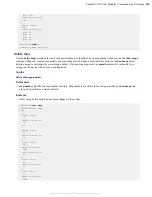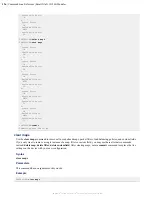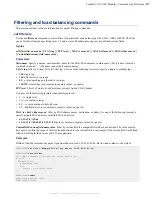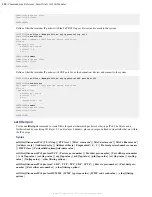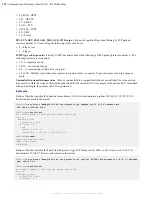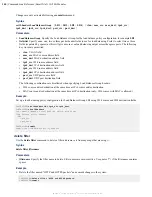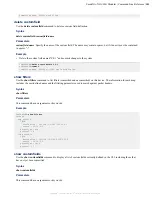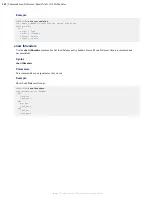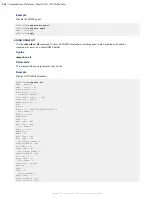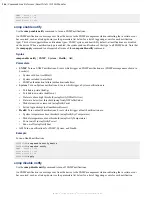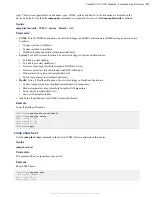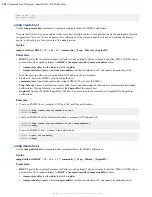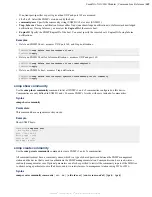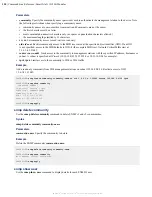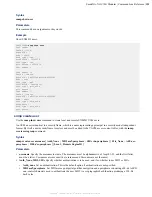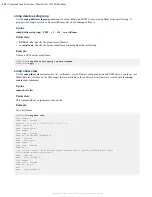
SmartNA-X 1G/10G Modular | Command Line Reference |
139
SmartNA-X
™
1G/10G User Guide 1.4
©
2015 Network Critical Solutions Limited
Parameters
•
customfield-name
Specify a unique name for the custom field. The name you enter here will be used later when
defining filters. The name may contain spaces, but if it does it must be contained in quotes "..." (the name cannot itself
contain quotes).
•
scope
Specify a packet type (or group of packet types) that the custom field applies to. Scope is one of the following
values:
•
all
Applies to all packet types.
•
all_ip
Applies to any IPv4 and IPv6 packets.
•
arp
Applies to ARP packets.
•
ipv4
Applies to IPv4 packets.
•
ipv6
Applies to IPv6 packets.
•
mpls
Applies to MPLS packets.
•
anchor
Specify the start point of the field. The start point can be one of:
•
packet_start
Start of the packet.
•
L3header
Start of the layer 3 header.
•
L4header
Start of the layer 4 header.
•
ipv6extension
Start of the IPv6 extension header.
•
offset
Specify the offset position for the start of the field, in number of bits. The offset is relative to the
anchor
position.
•
field-length
Specify the length of the field. Valid range 1-32 bits.
Note:
The length of
offset
plus
field-length
must not exceed 1008 bits.
Example
• Define a custom field called "Example customfield" with the following attributes:
• Scope = IPV4 packets
• Anchor = Start of L3 headers
• Offset value = 8 bits
• Field length = 16 bits
Review changes and commit to the system.
CONTROLLER>
set customfield "Example customfield" ipv4 l3header 8 132
CONTROLLER>
show customfields
Use commit command to configure the switch with these.
Custom fields
Example customfield
scope : ipv4
anchor : l3header
offset : 8 bits
length : 16 bits
CONTROLLER>
commit
Committing maps, filters, vline parameters and custom fields.
set lbheaders
Use the
set lbheaders
command to specify the header fields to examine for a Load Balancer Group. The packet headers
used for each group may be different.
For best practice, you should aim to balance using two or three header fields (more than three is not permitted), as this
will give a more even spread across the egress ports. With many egress ports in a group, or if the device has a lot of other
mapping and filtering configured, it may be necessary to balance using a single header field to prevent overloading of the
system.

